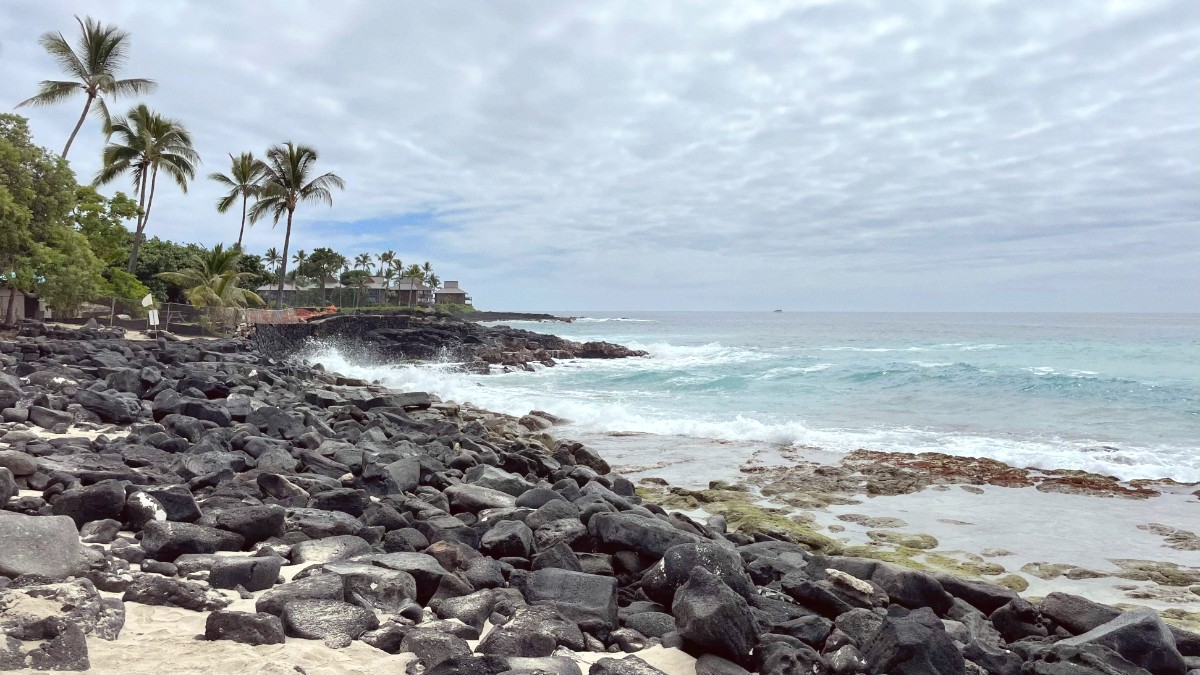
Hawaii, USA
Precipitation on the leeward side, where Kona sits, is much lower than on the windward side of the island. Most rainfall occurs from November through March. However, these showers are usually brief and localized. They often arrive in the late afternoon or evening, quickly passing and leaving clear skies behind. The annual rainfall averages around 18-25 inches, a stark contrast to Hilo's hundreds of inches.
Humidity levels remain consistently high, typically ranging from 70% to 80% throughout the year. This tropical humidity is a constant companion, contributing to the lushness of inland areas despite the dry coastal climate.
Hawaii's hurricane season spans June 1 to November 30. Direct hurricane strikes on the Big Island are rare, given the islands' small size and geographic location. However, tropical storms can bring heavy rain, strong winds, and high surf. Always monitor weather forecasts during this period. No monsoons occur in Hawaii. Extreme temperatures, either above 90°F (32°C) or below 60°F (16°C), are uncommon in Kailua-Kona itself.
Another weather consideration is vog, or volcanic smog. This stems from emissions from Kīlauea volcano on the island's east side. Vog can drift to Kona, especially when winds come from the south or southeast. Symptoms include headache, sore throat, eye irritation, and respiratory issues. If you have pre-existing respiratory conditions, monitor air quality reports from the Hawaii Department of Health or the USGS Hawaiian Volcano Observatory. Limit outdoor activity on days with high vog levels.
Mid-Dec to Apr, Jun-Aug
Excellent weather, abundant sunshine, calm ocean conditions, lively environment, peak whale watching.
Higher prices for flights and accommodations, crowded attractions, limited spontaneity.
May-June, Sep-Mid-Dec
Fewer crowds, lower prices, pleasant weather, good balance.
Higher potential for rain (brief), reduced frequency for some seasonal tours.
Sep-Nov (excluding holidays)
Best deals on flights/accommodations, very few crowds, relaxed local experience.
Increased chance of rain (brief but more likely), smaller businesses may have limited schedules.
For U.S. Citizens, no visa is needed; a valid government-issued photo ID, like a driver's license, suffices for domestic flights. For international travel outside the U.S., a passport is necessary. Canadian citizens have no visa requirement for tourism for stays up to 6 months; a valid passport is still necessary. Citizens from Visa Waiver Program (VWP) countries (including most EU, Australia, Japan, South Korea, UK) can enter the U.S. For tourism or business up to 90 days without a visa; an approved Electronic System for Travel Authorization (ESTA) before departure is mandatory. Apply for ESTA online through the official U.S. Customs and Border Protection website. A valid e-passport is also necessary. For other nationalities, a visa, like a B-2 Tourist Visa, is typically necessary.
For international visitors, your passport should be valid for at least six months beyond your intended stay. For U.S. Citizens traveling domestically by air, a REAL ID-compliant driver's license or state ID, or a passport, is necessary. Recent passport-style photos are part of the visa application process. Immigration officers may request proof of your onward or return travel. You might show you can financially support yourself during your stay.
Valid government-issued photo ID or passport.
Valid passport for tourism up to 6 months.
B-2 Tourist Visa (U.S. Embassy/Consulate application).
Return ticket, proof of funds.
Hawaii is an expensive destination, but strategies cater to different travel styles. The official currency is the United States Dollar (USD).
ATMs are widely available in Kailua-Kona. Credit cards (Visa, MasterCard, American Express, Discover) are accepted almost universally. Notify your bank and credit card company of travel plans to prevent fraud alerts. Foreign exchange services are limited in Kona; often best to exchange currency before arriving in the U.S. Or withdraw USD directly from ATMs. ATM withdrawals often offer the best exchange rates, though your bank may charge foreign transaction fees.
Hostel Dorm Bed: $60 - $90. Budget Hotel/Motel: $100 - $180. Mid-range Hotel/Vacation Rental: $180 - $400. Luxury Resort: $400 - $1000+. Street food/Food Truck: $10 - $20 per meal. Casual Restaurant/Deli: $15 - $35 per meal. Mid-range Restaurant (without drinks): $30 - $60+. Fine Dining (without drinks): $70 - $150+. Coffee: $4 - $7.
Kona Community Hospital (79-1019 Haukapila St, Kealakekua, HI 96750) serves the region, providing emergency services. Several walk-in urgent care clinics are available for non-life-threatening issues. Major pharmacies like CVS (Longs Drugs) and Safeway Pharmacy operate in Kailua-Kona. Tap water is safe to drink. Food safety standards are high.
Compare policies from reputable providers like World Nomads, SafetyWing, or Insubuy.